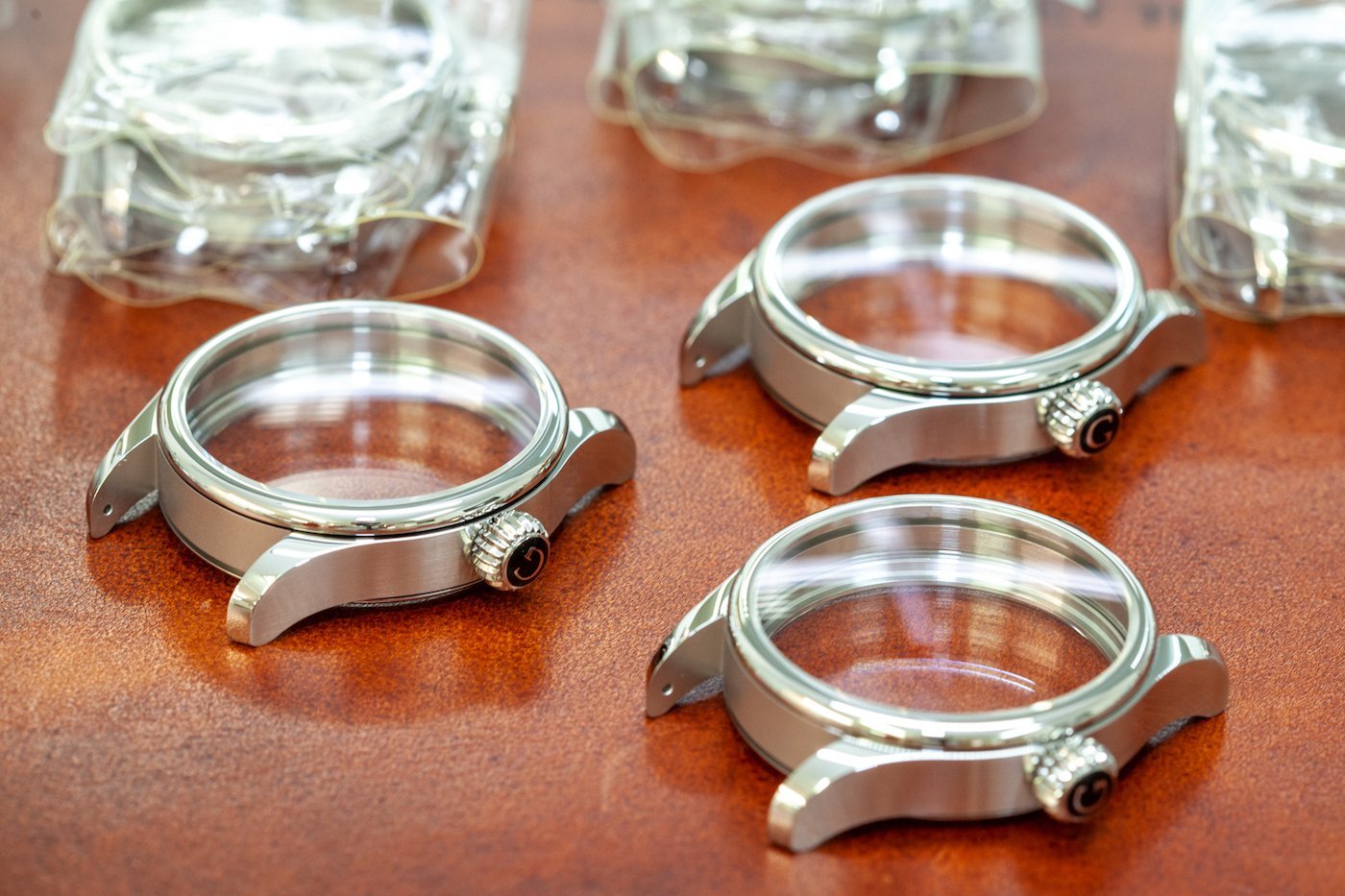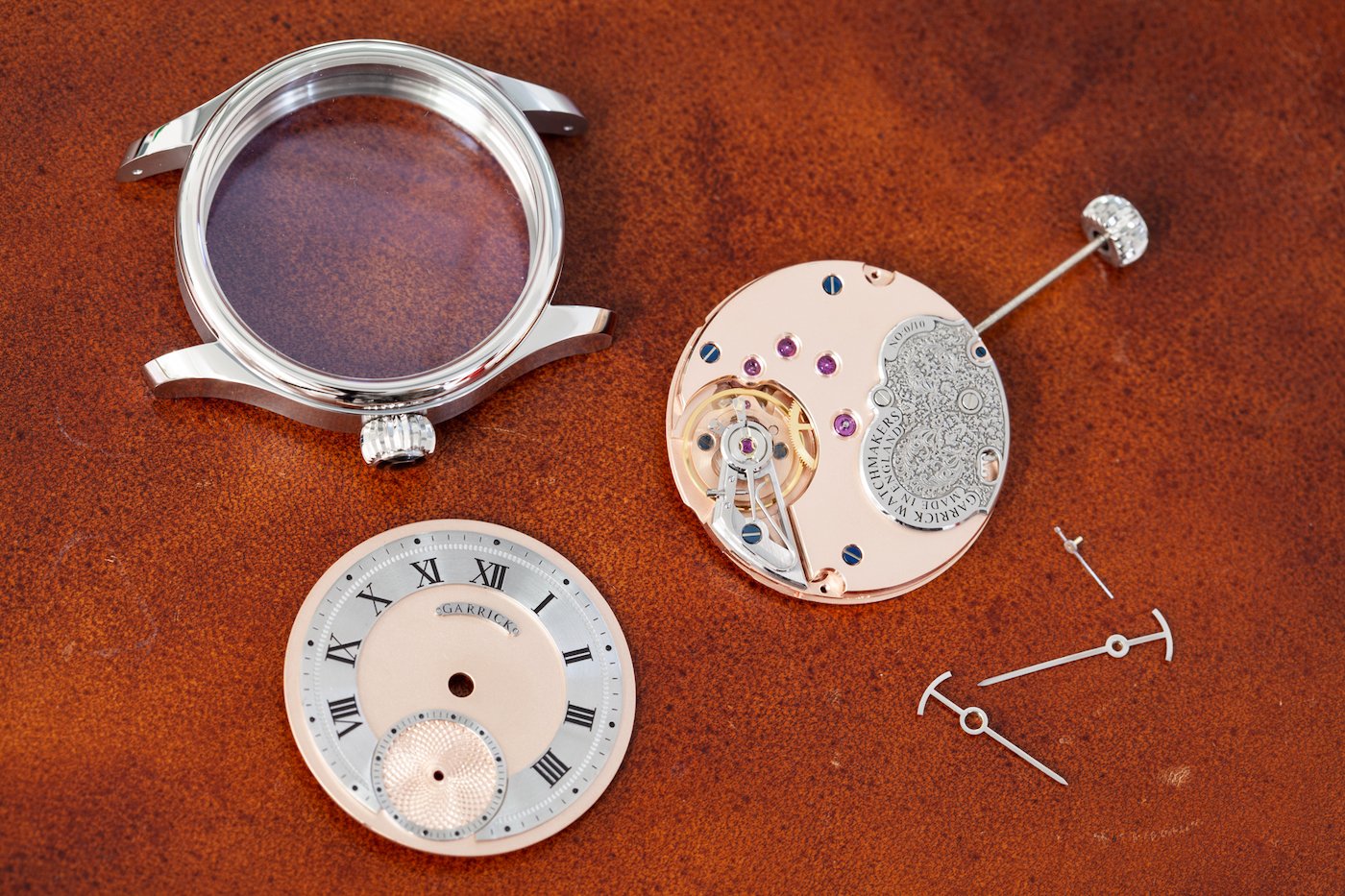hose with a taste for old-school English watchmaking may struggle to satisfy their appetite. At the top of the desirability tree sits distinguished horologist, Roger W Smith. But Smith famously closed its waiting list in 2021, and now existing pieces fetch six-figure sums at auction. Following on a sharply sliding scale are a myriad of microbrands, each with their own take on modern timepieces, but fine watchmakers are few and far between.
Step forward, Garrick Watchmakers. Founded in 2014, when England’s time-honoured horological traditions had fallen off the radar of even the most discerning collectors, Garrick set out to put high watchmaking back on the map and fill the gap for a homegrown artisan brand. “It was extremely difficult to make your mark [back then]… I thought maybe we could do something different because, at that time in the UK, there was nobody doing in-house watchmaking as such,” says collector-turned-owner, David Brailsford.
Founded in 2014, when England’s time-honoured horological traditions had fallen off the radar of even the most discerning collectors, Garrick set out to put high watchmaking back on the map and fill the gap for a homegrown artisan brand.
The idea for the brand came from Brailsford’s partner and co-founder, Simon Michelmayr. A graduate of the renowned Watchmakers of Switzerland Training and Educational Program (WOSTEP), Michelmayr is a leading British watchmaker of his generation. Brailsford himself was a veteran watch consultant. Having worked with numerous brands for many years, he was well aware of the mammoth undertaking ahead of them.
-

- Garrick co-founder David Brailsford
Nonetheless, the duo set their sights on upholding traditional techniques, pouring their own money into realising this goal. It was a well-judged mission. Within a few short years, Garrick had made a name for itself on the independent watchmaking scene.
Garrick’s handcrafted mechanical timepieces are created for purists who appreciate their decidedly British character and provenance. From hand-guilloché dials, and exquisitely exposed mechanisms, to free-sprung, screwed balances, Garrick’s styling and execution blend traditional fine watchmaking with technical virtue.
In 2018, the brand launched the S-series, which soon became its flagship collection. With no attention-seeking gimmicks, each timepiece embodies old-fashioned high-horology mechanics, consisting of a substantial quotient of locally sourced materials and a plethora of in-house components. Then, in 2021, Garrick was recognised at the Grand Prix d’Horlogerie de Genève (GPHG) when its S4 model was chosen as a finalist in the “Petite Aiguille” category, which is open for watches with a retail price between CHF 3,500 and CHF 10,000.
-

- The annual output of Garrick’s small-scale numbered series, typically with a five-figure price tag, is currently capped at 70 pieces.
Next came the S5, the brand’s smallest watch to date at 39mm. It is a completely new construction with a more compact movement, which Garrick designed from the ground up. Its exclusive UT-G05 calibre was developed by Michelmayr and fine-tuned by esteemed Swiss master of complications, Andreas Strehler. Movement production is done in-house with parts engineered in the UK and Switzerland.
Garrick’s handcrafted mechanical timepieces are made for purists who appreciate their decidedly British character and provenance.
Despite the recent revival in British industrial manufacturing, Garrick’s labour-intensive approach puts it at the other end of the spectrum. Annual output of its small-scale numbered series, typically with a five-figure price tag, is currently capped at 70 pieces.
The company also offers watch craft and care services. Clients can choose from a range of personalised options carried out by the team of three watchmakers at a dedicated facility in Norfolk, England. “We’ve invested heavily in a lot of machinery over the past few years. It is quite an impressive setup for a British watchmaking company,” says Brailsford.
-

- Handcrafted in limited numbers, the S6 showcases Garrick’s in-house dials and hands. The dials are available in a choice of colours with both hammered and engine-turned finishes created in-house using traditional rose and straight engine lathes.
A workshop of this kind is a rarity in Britain, equipped as it is with in-house capabilities of fabrication, polishing, finishing, regulating, assembly, and testing. On top of this, it has its own plating room for the metal surface treatment, which Brailsford calls the “biggest nightmare” for most brands.
Many of the on-site machines are of incredible historical significance, including the Hauser jig borers for precision milling and two traditional rose engine lathes. Brailsford is particularly proud of an exceptionally rare, antique rose engine that used to perform guilloché for the late acclaimed independent watchmaker, Derek Pratt.
Brailsford concedes that “it has been an extremely long road”. “We had a dream and we’ve taken it one step at a time, day by day. And I say ‘day by day’ because literally, it’s been that,“ he reflects, “I didn’t always think we could do it, to be honest, because it has been difficult.”
A workshop of this kind is a rarity in Britain, equipped as it is with in-house capabilities of fabrication, polishing, finishing, regulating, assembly, and testing.
But he’s rightly proud of how far they’ve come. “Obviously, the plan is to do everything ourselves. But we can’t do that. We’re not geared to do every single thing in-house, especially at the private practice [for bespoke watches].” Garrick uses a local engineering company to produce batches of twenty cases at a time. “That being said,” Brailsford continues, “we’re doing the vast majority and we’re in a good position. We’re happy with that. And I’m not big-headed, I genuinely believe our brand has put British watchmaking back on the map. It was always the plan, but we never knew it would take so long.”
While their vision has attracted offers of financial backing, the tenacious duo has categorically refused them all. “It’s not how we operate. Okay, if we’d done that, we might have been more successful in a faster period of time. But it just didn’t appeal to us to do it that way. I wanted to take the time to do it right. And believe me, we’ve made a lot of mistakes along the way,” says Brailsford.

The brand has also been fortunate to count on a network with great pedigree. “We’ve had a lot of help. I have a lot of friends in the industry, and my good personal friend is Andreas Strehler, who has helped us out so much,” acknowledges Brailsford. “He’s an absolute genius…the knowledge that man has. Without Andreas, we wouldn’t be where we are today. That’s a fact.”
As the growth of independent watchmakers continues to gain momentum, collectors are increasingly interested in British brands. Garrick is at the forefront of the resurgence, getting the credit it deserves as a quintessential artisan watchmaker. But success brings its own challenges. “We have got two to three years’ worth of work on the books. And we’d like to increase productivity and double it,” says Brailsford. “The problem is, I don’t know how we’re going to do that. We’re only building 70 watches per year. That’s all we can physically build. We’re stuck in a rut because of the handmade nature of the watches.”
-

- Swiss master watchmaker Andreas Strehler helped the British brand design its own collection of calibres.
With existing orders currently subject to a year-long waiting time for delivery, Brailsford says he was “seriously tempted” to outsource. “The only way we could realistically do it is if we started making dials and parts externally. But again, we don’t want to do that.”
Brailsford remains wedded to his mission. “The dilemma is we can do more in-house. We could do all of it in-house, up to a certain point. There is no doubt whatsoever we could build a watch, with a totally in-house calibre. But we’d be charging 10 times more, and we want to keep our prices down,” he explains. “That’s our philosophy – it is high-end, affordable, and that’s what I want to do.”
For Brailsford, Garrick is more than a business, it’s a calling. “People have always said to us, competitors are selling double, three times the price for a similar project. Well, that’s not what we’re about. Our profits are extremely low, which might sound really stupid coming from businessmen, but we’re happy that way. We want to try and put these watches out. Our aim is to get our own watches and put British watches on wrists, and that’s what we want to do.”
Affordability is relative but with the new S6 model starting from £5,000, Garrick certainly offers an attractive proposition considering other brands of comparative craftsmanship. Brailsford calls this commitment to value “deep-rooted”, and says, “I don’t think that’s going to change in the long run, to be honest.“ That’s good news if you’re curious about British fine watchmaking, as long as you’re happy to wait.
While their vision has attracted offers of financial backing, the tenacious duo has categorically refused them all. “It’s not how we operate.”

























